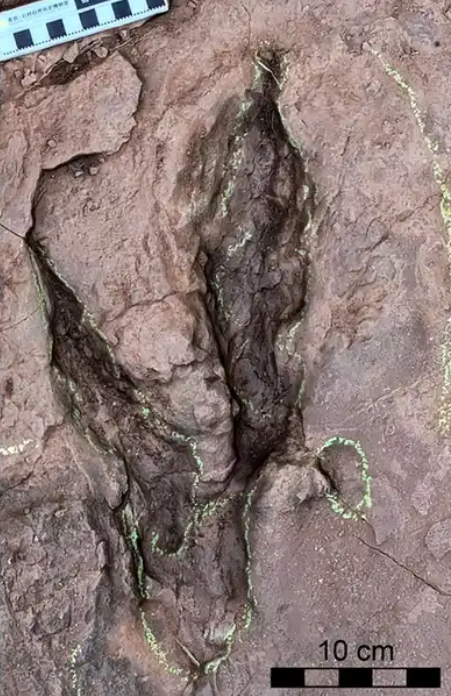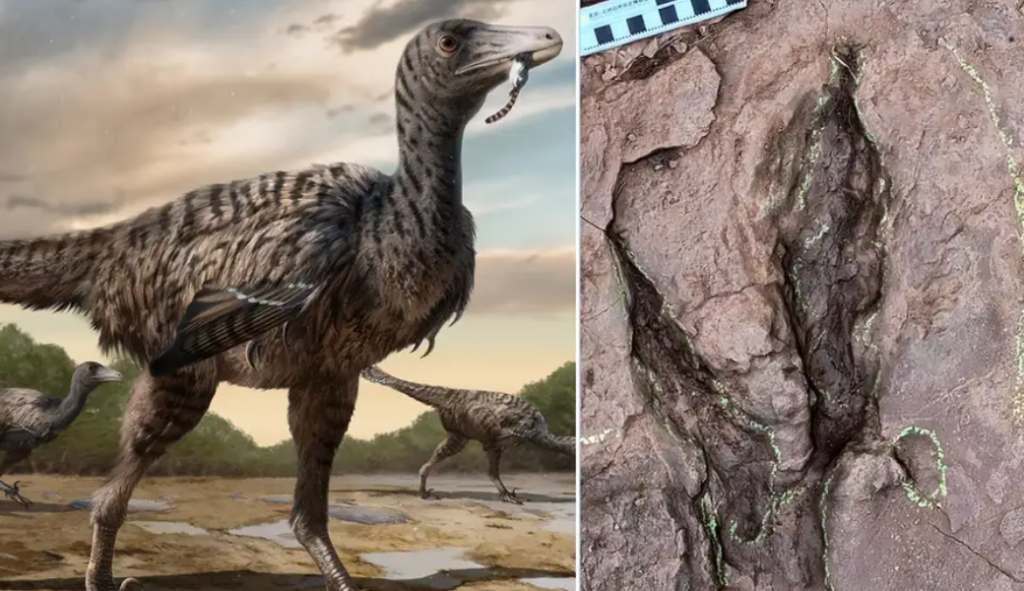Huge dinosaur footprints were found to belong to one of the largest raptors ever discovered.
Others are reading now
A set of massive dinosaur footprints found in southeast China suggests that a raptor dinosaur that lived around 96 million years ago in East Asia might have been one of the largest raptors ever known.
These five footprints, measuring 14 inches (36 centimeters) in length, indicate that this predator, named Fujianipus, could have reached a length of 16.4 feet (5 meters) from snout to tail — about half the length of a standard school bus in the United States.

Also read
Discovering Fujianipus
Scott Persons, a paleontologist at the College of Charleston in South Carolina, and his colleagues made this fascinating discovery.
Although they have not yet found any parts of Fujianipus’s skeleton, they identified the dinosaur from the unique characteristics of its footprints. The two-toe imprints in each footprint point to a raptor, technically known as a deinonychosaur.
Raptors typically have three toes, but one is held off the ground to protect the large “killing claw” at its tip. Fujianipus likely used these enormous claws, one on each foot, to attack its prey.
Contrary to popular portrayals in media like Spielberg’s Jurassic Park (1993), raptors such as Velociraptor are generally much smaller than expected, typically about the size of a turkey. Only a few raptor species, like Utahraptor and Dakotaraptor, could grow to lengths of 16.4 to 19.7 feet (5 to 6 meters). The recently discovered Fujianipus appears to be among these giant raptors.
The Evolutionary Niche of Fujianipus
The size of Fujianipus suggests that some raptors might have grown even larger to compete with the biggest predatory dinosaurs of their time—the allosauroids, some of which reached over 32 feet (10 meters) in length.
Raptors may have had a unique advantage over these larger predators: speed. Despite their smaller stature, raptors were agile and fast, allowing them to thrive in a competitive landscape.
The Tyrannosauroids’ Rise to Dominance
Although Fujianipus indicates that raptors had the potential to grow larger, they ultimately did not exceed their known sizes. One possible reason for this is the rise of another group of predatory dinosaurs: the tyrannosauroids.
Tyrannosauroids, like the iconic Tyrannosaurus rex, combined speed with massive size, presenting a significant challenge for raptors to compete with them for dominance in their ecosystems.


